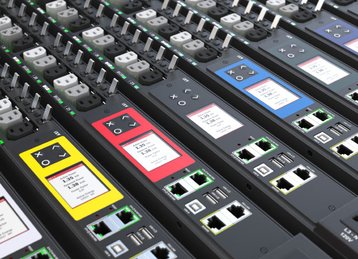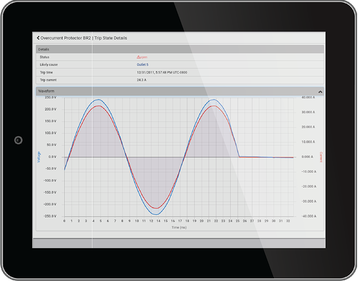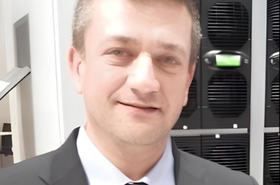In today's landscape, sustainability within data centers has surged to the forefront as organizations establish carbon-neutral targets, commit to waste reduction, and embrace the use of recycled materials. This shift reflects a broader commitment to environmental responsibility and resource conservation.
The International Energy Agency (IEA) reports that data centers and data transmission networks account for 1-1.5 percent of global electricity usage, underscoring the pressing need for sustainable solutions. The escalating demand for data center capacity, driven by society's increasing reliance on data and the growth of AI systems, compounds the challenge, amplifying both energy consumption and the associated carbon emissions.
Data center providers are proactively addressing the imperative to reduce power consumption and mitigate carbon footprints. In response, the data center industry has set ambitious sustainability goals, aligning with the collective commitment to building a more sustainable digital infrastructure.
Many data center operators assess the success of their sustainability initiatives by employing The Green Grid's Power Usage Effectiveness (PUE) to gauge their data center's energy efficiency, which is calculated by dividing total data center power consumption by the power utilized by IT equipment. A lower PUE signifies enhanced energy efficiency, indicating a reduced waste of resources. Elevating PUE is crucial for data centers to advance their environmental sustainability and diminish their carbon footprints.
Through diligent power quality monitoring, data centers can pinpoint areas of inefficiency and waste, empowering them to optimize infrastructure and further reduce their PUE.
Challenges in power quality monitoring
The challenge is that some data centers lack the power monitoring capabilities necessary for achieving heightened efficiency and sustainability. Moreover, there needs to be more continuous power quality monitoring. Many rely on rudimentary measurements, such as voltage, current, and power parameters, gathered by intelligent rack power distribution units (PDUs), which are then transmitted to DCIM, BMS, and other infrastructure management and monitoring systems.
Some consider power quality only during initial setup or occasionally revisit it when reconfiguring IT setups. This underscores the critical role of intelligent PDUs in delivering robust power quality monitoring and the imperative for data center and facility managers to steer efforts toward increased efficiency and sustainability.
Certain power quality issues can have detrimental effects on the electrical reliability of a data center, leading to costly unplanned downtime and posing challenges in enhancing sustainability. These issues include:
- Voltage dips and swells: These short-term fluctuations in voltage levels can cause IT equipment to malfunction or fail, leading to data loss or system crashes.
- Harmonic distortion: This electrical noise can cause overheating of IT equipment, causing damage and premature failure. Additionally, harmonic distortion can interfere with data transmission, leading to errors and reduced network performance.
- Power outages: Total power loss can lead to data loss, corruption, and equipment damage.
- Frequency variations: Shifts in AC power supply frequency can trigger IT equipment malfunctions or shutdowns.
These power quality issues can profoundly affect a data center's functionality and dependability. They may result in unforeseen downtime, harm to equipment, data loss or corruption, and reduced network efficiency. The absence of accessible power metrics can impede data center operators from recognizing stranded capacity, preventing them from optimizing space and usage efficiently and sustainably. Hence, data centers must adopt dependable and intelligent power distribution solutions capable of capturing such details. This proactive approach helps mitigate power quality issues and ensures the uninterrupted operation of their IT infrastructure.
The challenge is that many intelligent rack power distribution units lack detailed visibility into power quality data at the rack and outlet levels despite offering a range of advanced features. This limitation arises from the need for more monitoring capabilities embedded in these intelligent PDUs, as they often focus on monitoring a limited set of parameters like voltage, current, and power.
While such data can offer insights into the general health of a data center's electrical infrastructure, it needs to provide the granular details necessary to pinpoint specific power quality issues affecting individual racks or devices. This lack of specificity makes it challenging for data center managers to proactively identify and rectify power quality issues before they escalate into significant problems. There is an increasing demand for a new generation of reliable, intelligent rack power distribution, monitoring, and control solutions to address this crucial gap.
Features of a best-in-class PDU
The ideal PDU for powering sustainability in data centers should deliver comprehensive intelligence for visibility, reporting, and alerting for power and power quality metrics at the cabinet level. Additionally, it should exhibit flexibility to accommodate future data center requirements.
To effectively address the evolving demands of modern data centers regarding rack power monitoring and infrastructure requirements, future-ready capabilities must be integrated into rack PDUs. These enhancements encompass advanced power quality monitoring, comprehensive metrics, real-time alerting, and precise accuracy with a margin of ±0.5%. PDUs should offer visibility into peak and min/max power measurement values within this upgraded framework. This not only aids in capacity planning and identifying stranded capacity but is also crucial for failover planning.
Additionally, PDUs should include measurements of total harmonic distortion, enabling circuit breaker trip forensics. This feature allows data center operators to pinpoint the exact location and cause of trips, facilitating prompt troubleshooting and restoring power to unaffected equipment. A truly intelligent PDU captures associated waveforms, providing valuable data for reviewing and expediting power restoration to non-offending equipment.
Beyond the intelligence features of the PDU, achieving high density is paramount for forward-thinking data centers. Some data center and facility managers currently opt for off-the-shelf power strips to fulfill their density needs. However, this approach may necessitate specifying additional PDUs, expanding power infrastructure, and incurring higher costs.
Moreover, it may not provide the right number, type, or configuration of outlets. Data center professionals aiming to future-proof against evolving equipment density and changing requirements should seek PDUs with high-density and flexible outlet configurations. Integrating this capability into a single PDU streamlines the utilization of high-input power capacity in smaller spaces, enabling the powering of more devices within the cabinet while reducing costs and minimizing infrastructure demands.
Data center operators should consider selecting intelligent rack PDUs that offer the following features:
- Advanced metering capabilities to monitor power quality metrics in real time.
- Flexible outlets that can be used for multiple applications that adapt to meet future equipment changes.
- Alternating outlet and branch power distribution to simplify three-phase load balancing and improve cabinet airflow.
- Circuit breaker trip forensics to identify the specific outlet that caused a trip.
- High-density outlet technology to meet increasing power density demands.
- High-strength cable and outlet locking and flexible infeed cord design.
- Secure encrypted communication, by default, for all PDU data.
The path to creating sustainable data centers includes enhancing the understanding of power quality data; this empowers facility managers to identify sources of inefficiency that may cause wear and tear on equipment, ultimately improving uptime. It's essential that PDUs are viewed as more than just 'power strips' and are instead recognized as playing a crucial role in offering the necessary power quality monitoring for enhancing data center PUE.
The next-generation Server Technology PRO4X and Raritan PX4 intelligent rack PDUs by Legrand revolutionize capacity planning, workload optimization, environmental monitoring, physical and digital access control, and uptime initiatives, helping solve the power needs of data center operators today while assisting them to anticipate tomorrow's rack power distribution challenges and problems.
To learn more about the Server Technology PRO4X and Raritan PX4 Rack PDU solutions by Legrand, visit here.






